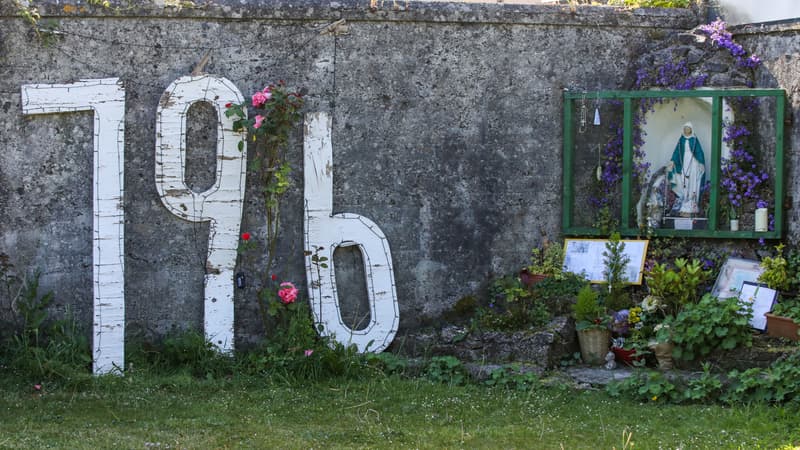“When I started, nobody wanted to listen,” recalls Catherine Corless. In 2014, he revealed that 796 children had been buried anonymously in a home in Ireland. More than ten years later, the first exhumations began. On Monday, June 16, the workers installed fences from the site to complete the perimeter of the old septic tank of St Mary’s house of the Good Second Sisters, in anticipation of the first exhumations in July.
Piloted by Daniel Macsweeney, the investigation should last almost two years. A first phase of excavations on the site is scheduled for the next four weeks. And in mid -July, the teams should finally excavate the bodies of the children. “It was a fierce fight,” recalls Catherine Corless, 71 that AFP met in Tuam, in western Ireland, near the site where exhumations will take place.
It all began in 2014. That year, this local historian brought to light evidence that attests to the death of 796 children, newborns until the age of nine years, in this house in a small city located 220 kilometers from Dublin. Her research was brought to a macabre discovery: a common well. “There was no burial record, no cemetery, or statue, or cross, absolutely nothing,” he recalls.
Especially “When I started, nobody wanted to listen (…) I begged: get these babies from these sewers, offer them the decent Christian burial that was rejected,” he says. In vain. The institution shaved in 1972 and gave way to a subdivision. The well remained intact.
“Illegitimate”
When Catherine Corless’s investigation was published, they caused a shock wave in Ireland, brutally revealing the treatment reserved for children born to marriage. For decades, society, the State and the Catholic Church, which has historically had an iron fist in the behavior in Ireland, have relegated pregnant women not married with “houses of parents and children.”
After childbirth in these institutions, the children were separated from their mother, then often adopted. But some did not have this opportunity. According to the newspaper Ireland independentIt is said that the children of the house of Tuam died of malformations, heart problems, dear or flu.
After the revelations of Mrs. Corless, investigations were launched in the country. They established that 56,000 single women and 57,000 children went through 18 homes of this type between 1922 and 1998. Among them, around 9,000 children died.
Some of these houses were financed and administered by local health authorities, others by Catholic religious orders. Tuam’s house was administered by the Good Help sisters. “All these babies were baptized and yet the church looked the other way. For her, that did not tell: they were illegitimate, ending,” he accuses.
“Small Sales Secrets”
Despite the discovery of the first human remains in 2016 and 2017, it was not until 2022 that a law officially authorized excavations. A slowness that Anna corrected a complaint, shedding what she calls “Irish justice.” He was fifty when he discovered that his mother, who died in 2012, had given birth to Tuam to two children: John and William.
A death certificate for William was not established, and John’s has not been subject to medical supervision. The rare documents that Anna could access left many gray areas. In his kitchen, he shows a 1947 report to AFP, indicating that John was “a sad and demaciously”, when he was born with good health a year earlier. William could have been the subject of illegal adoption abroad.
“There are small dirty secrets in Ireland that we prefer to hide. The country has a virtuous image abroad, but it also has a dark and sinister side,” he said, accusing the authorities of “procrastination.” In 2023, a team was finally named to perform operations in Tuam.
Your mission: find, identify and bury the remains that will be exhumed with dignity. DNA samples will be deduced from people capable of attesting a family bond with babies who died in this house. Analysis that relatives have sometimes been waiting for a lot of time. As Peter Mulryansurvivor of the house and in search of a sister who will be part of the young victims. Now, 80 years old, he came to attend the inauguration of the excavation site.
For his part, Catherine Corless says: “I would never have thought that this day arrived. Many obstacles have crossed.” However, the local historian is still lucid. She knows that excavations will not provide all the answers. “Even if we identify some remains, it will not bring peace to all,” he breathes.
Source: BFM TV


